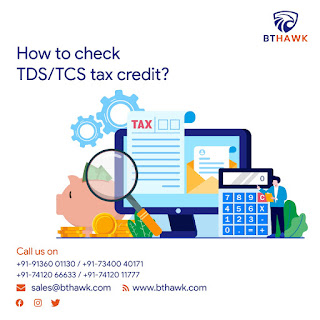Being a taxpayer you need to check your Form 26AS in order to ensure the tax deducted at source (TDS) is reflected in your income records. This form is a consolidated tax statement issued under Income Tax Rule 31AB to the PAN holders.
- This statement includes details of:
(i) Tax deduction at source (TDS)
(ii) Tax collected at source (TCS)
(iii) Details of tax paid: Advance tax, regular assessment tax, self-assessment tax, etc deposited by the taxpayers (PAN holders)
(iv) Details of Paid Refund
(v) Details of AIR Transaction
(vi) Details Tax Deducted on sale/purchase of immovable property u/s194IA
Form 26AS is an annual tax statement and is divided into three parts:
Part A: Details of Tax Deduction at Source (TDS)
The part A of the form displays details of TDS by each deductor who has made a specific kind of payment to you. This includes details of the deductor (name & TAN) along with details of tax deducted including a section under which he deduction was made (for eg, Section 192 of salary), date on which the payment was made, amount paid/credited, tax deducted from your payments are also included in the past.
Part A1: Details of Tax Deduction at Source (TDS) for Form 15G/From 15H
Details of income from which the TDS has not been deducted since the taxpayer submitted Form 15G or Form 15H. If you have submitted Form 15G and Form 15H, you can verify the status of TDS deduction. And in case you have not submitted Form 15G and Form 15H, then ‘No transactions present’ message will be displayed.’
Part A2: Details of Tax Deduction at Source (TDS) on sale of immovable property u/s194(IA). This is applicable if you have sold property and TDS was deducted from your transactions. You will find all the details of deduction here.
Part B: Details of Tax Collected as Source (TCS)
This part of the form displays details of tax collected at source by a seller of specified goods at the time of the sale of that good to you. Details similar to that displayed in Part A in respect to the seller and tax collected will be displayed here.
Part C: Details of Tax Paid
Part C of the form displays details of income tax paid by you including advance tax and self-assessment tax and challan through which the tax has been deposited in the bank.
Part D: Details of Paid Refund
Information of refund, if any, will be displayed in this section. Assessment year, mode of payments, amount paid, interest paid and date of payment is also displayed in this section.
Part E: Details of AIR Transaction
Banks and other financial institutions are required to report any high-value transactions to the tax authorities. Mutual fund purchases, property purchases, high-value corporate bonds are all displayed here.
Part F: Details of Tax Deducted on Immovable Property Sale
During buying a property, you need to deduct TDS before making payment to the seller. This section displays the details of TDS deducted and deposited by you.
Part G: TDS Defaults (Processing of Defaults)
Defaults relating to the processing of statements are displayed here but do not include demands raised by assessing officers.
- TIN System
The non-government entity that has deducted/collected tax at source is needed to deposit it through a bank. This payment-related to this payment will be uploaded to the TIN central system. They are also needed to provide the details of their TDS.
The TIN central system will then match this information from the statement and tax receipt from the banks. If both the information match, TIM system will create a comprehensive ledger for every PAN holder providing details of tax deducted and collected. Government deductors are needed to deduct and collect the tax at source and deposit it in the government’s account.
However, if the tax is transferred into the government’s account via book-entry and not deposited in the bank. The deductors are also needed to file the TDS/TCS in electronic form to TIN. As the upload of details of TDS/TCS deposits through book-entry is under the implementation, the details of TDS/TCS in respect to government deductors are not posted in the form at present.
When the advanced tax and self-assessment tax is deposited directly in the bank, the information will then be forwarded to the TIN central system by the bank three days after receiving the payment. The information will be displayed in part C of the form.
- Credits Available
Credits available in the tax statement confirm that the tax deducted/collected by the deductor has been deposited to the government.
The deductor/collector has filed TDS statements accurately providing details of the tax deducted/collected on your behalf.
- Proof of tax paid
The consolidated tax statement (Form 26AS) can use it as a proof of tax deducted/collected on your behalf, tax directly paid by you, income tax returns, and other relevant details. Additionally, you can also view details of refunds received during that financial year. However, if the PAN detail is not mentioned properly, the TDS details cannot be posted on your Form 26AS. Hence, it is important to provide PAN details to all entities who deduct/collect tax on your behalf.
https://bthawk.com/

I am very ecstatic when I am reading this blog post because it is written in good manner and the writing topic for the blog is excellent. Thanks for sharing valuable information. physical therapy billing services
ReplyDelete